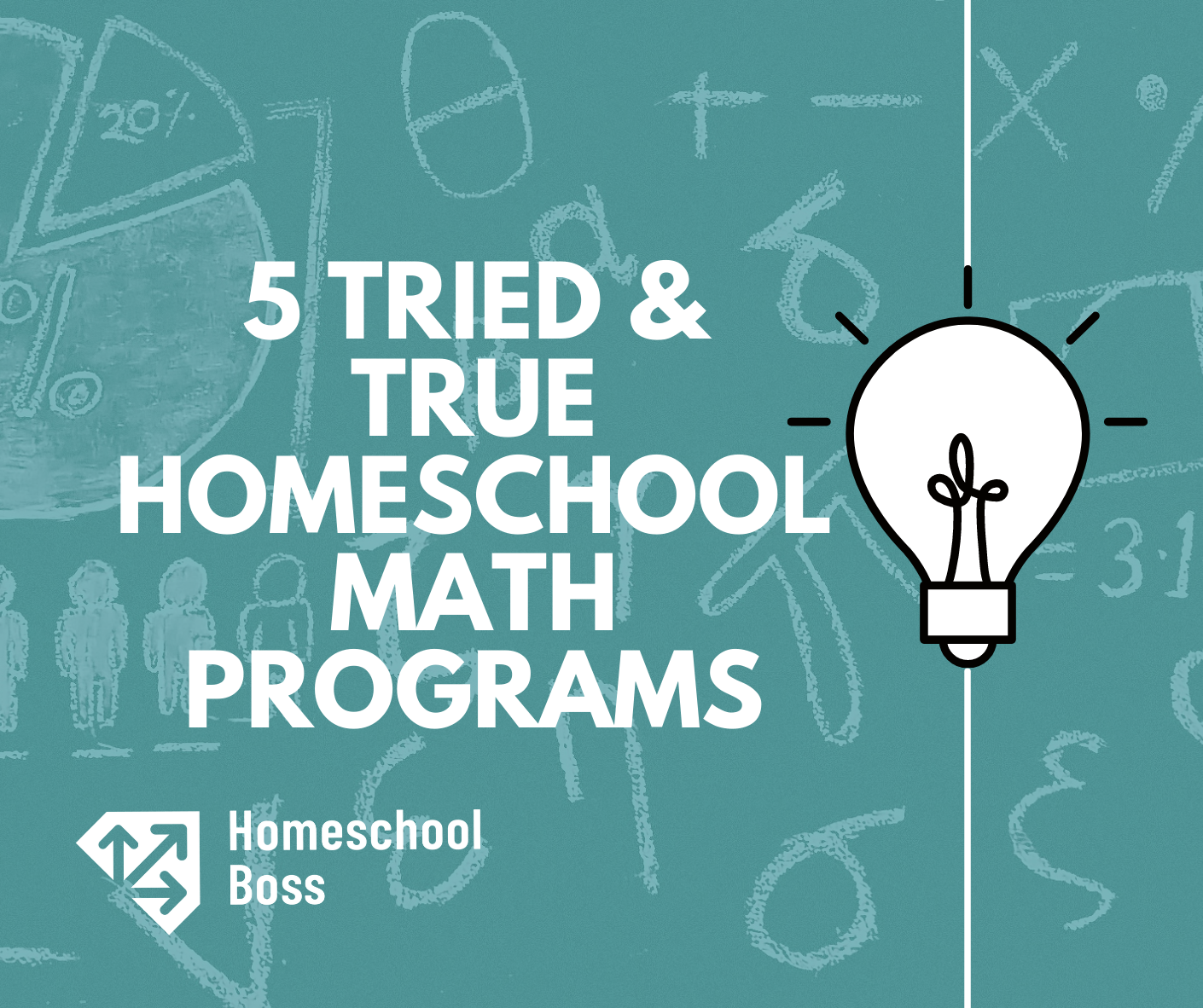Homeschool Testing 101: All You Need To Know

Homeschool Testing: All You Need to Know
Posted on by Ellen Crain / 4 comments
Save and ShareHomeschool Testing 101: All You Need To Know What is homeschool testing and why do it?…
How to Use Your Step Up for Students PEP Scholarship
Posted on by Bek Cunningham
Save and Share So, you’ve received your Step Up for Students PEP scholarship funds – now…
MAP Reading Fluency Makes Screening For Dyslexia Fast And Easy
Posted on by Ellen Crain
Save and ShareAs children begin learning to read and write, they often have trouble sounding out unf…
5 Tried & True Homeschool Math Programs
Posted on by Ellen Crain
Save and ShareOne of the most common questions I’m asked is “what is your favorite homes…
What is homeschool testing and why do it?
From an academic perspective, testing (or assessment) is anything that gives an instructor information about what their student knows.
The first step to homeschooling is knowing how to prepare your child for standardized tests.
While homeschool parents have a front-row seat to their children’s learning, many worry about their own blind spots in assessing their kids or are unsure about how their kids’ performance compares to what would be expected in school. This can lead them to consider homeschool testing.
Other homeschool families test to meet legal requirements or to keep non-custodial parents in the loop.
Homeschool testing can be a great tool to learn about kids’ strengths and weaknesses, determine whether they are on track compared to their public-school peers, and measure growth over time. However, a lot of homeschool parents find testing confusing and stressful.
In this post, we will take the mystery out of testing by explaining how tests work, what the terminology means, and how to use the results in your homeschool.
Standardized Tests:
Tests that are administered in a standardized way that allows for comparison among the people who take the test. These can be fixed or adaptive tests.
Fixed Tests→
All students of a particular grade level answer the same questions.
Adaptive Tests→
Questions adjust to the level of the student.
Students get questions at the right level for them – making this test option more accurate than fixed tests for all students.
Especially beneficial for students who are performing well above or well below grade level expectations.
Adaptive tests offer the same degree of challenge for all students – all students will get roughly the same number of questions correct on the test.
Their score is determined by the difficulty of those questions.
The following are types of assessments that can be used to help you understand where your child is in their learning ↴
Formative Assessments
Usually an informal observation of what your child has learned and what topics they need more instruction in.
Using these observations to adjust what you do with your kids learning is the hot new thing in teaching today.
Examples:
Having a conversation in the car about a book they are reading – this can help you gauge how well they are understanding it.
Playing a board game together – you might notice some math skills that are giving them trouble.
Criterion Referenced Assessments
This is probably what you imagine when you think of testing as it is a little more formal than a conversation.
These are tests that show whether the student has learned specific skills based on pre-specified criteria – student scores are not compared to scores of other students.
Typically the goal of a CRA is a perfect score or at least to “pass”.
CRAs are most useful if they are aligned with your teaching goals and curricula.
Examples:
A math test at the end of a chapter.
A weekly spelling test.
Norm Referenced Assessments
These are formal tests that compare the homeschooled child’s performance with a “norm group” of children who took the test at some point in the past.
Normed tests are not pass/fail (even though some state homeschool laws include cut scores).
Norm-referenced test scores are primarily about comparing performance, not specific skills, with the norm group. Because of this it is important that the norms are recent and use large groups to be reliable, rather than using a test with questions that match your curricula.
Experts recommend using normed tests no older than 10-12 years.
Some homeschool testing companies claim that public school standards were higher in the past, and therefore an older test is more rigorous than a current one. However, that claim does not hold up—the “Nation’s Report Card” shows that an average fourth-grade math student from 1990 would be in the bottom quarter of the class today.
MAP® Growth™ is a nationally norm-referenced computer-adaptive assessment that accurately measures performance. MAP Growth is using 2020 norms. See all normed test comparisons here.
Examples:
SAT
IQ Tests
Testing is a crucial part of the teaching process. The purpose of all these kinds of tests is to learn more about your child so you can be a better homeschooler.
Done well, testing tells you when your child is ready to move on to something new and when they need to spend more time mastering a topic. It tells you which lessons from earlier months or years stuck and what was forgotten.
Every learner is on their own path — testing helps you figure out where your kids’ learning path is taking them so you can guide them where they need to go.
How to Give Your Homeschooled Child a Standardized Test
The best way for your child to take a standardized test depends on your child and your assessment goals. Here’s a step-by-step guide, from choosing the test to getting the results.
Determine your goals for testing→
- Does your state have a homeschool testing requirement you need to meet?
- Are you concerned that your child may not be working at grade level?
- Do you have an advanced child and you want data to better meet their needs?
Choose a type of test→
- Timed or untimed?
- Paper, online or individually administered?
- What subjects are important?
- When was it written?
- When was it normed?
- How useful are the results?
Choose a homeschool testing service→
K-12 standardized test publishing companies do not work directly with individual families – therefore you will need to work with a homeschool testing service.
Look for a service with strong privacy policies and a reputation for providing excellent customer service.
Be wary of services that don’t list a physical address or include a phone number.
Schedule your test→
- How many days does your test require?
- How many hours?
Find a week when you can make testing a priority and you don’t have any other major commitments.
If you are testing at the beginning of the school year, wait until you have been back in your homeschool routine for at least a couple weeks, so your score isn’t overly influenced by summer-loss.
If you are testing at the end of the school year, pay attention to any deadlines the testing service may have.
Prepare for testing→
Homeschool testing is low stakes testing so there is no need to drill students the way some public schools may. However, some preparation can be helpful.
Make sure your kids are familiar with the format of the test you have chosen.
For online tests, make sure they are comfortable using the mouse or touchscreen.
For adaptive tests, explain that they should expect to be challenged and will not be able to answer all the questions correctly.
Help them get a good night’s sleep before testing and start the day with a healthy breakfast.
During testing, encourage a healthy growth mindset→
It’s not about passing or failing; it’s about learning what your child can do so you know what to focus on in your homeschool. Follow the test administration rules carefully so you get results you can trust.
Immediately after testing, talk about first impressions→
Ask your kids what they thought and if there were any topics on the test they’d like to know more about.
If you have immediate results, compare them with previous results and celebrate your successes.
Talk with your child about what they feel is going well and what they might like to change.
In the week after testing, reflect and set goals→
Using your child’s score report combined with your own observations, reevaluate your curriculum choices and consider what might need adjustment to better meet your child’s needs.
In addition, talk to your child about specific goals for them to work towards. These should be SMART goals that you support, but your child controls.
Understanding Your Homeschool Test Results
Three Reminders Regarding Homeschool Testing
- Keep your perspective; test results are a data point, not the whole story.
- Choose a high-quality test and schedule it for a time when your kids can give it their best effort.
- If your test results support it, accelerate; don’t make large skips in curricula.
Helpful definitions to understand your score report:
RIT SCORE→
- A grade-independent measurement of student performance.
- RIT stands for Rasch UnIT, which is a measurement scale developed to simplify the interpretation of test scores.
- The RIT score relates directly to the curriculum scale in each subject area. It is an equal-interval scale, like feet and inches, so scores can be added together to calculate accurate class or school averages.
- RIT scores range from about 100 to 300.
- Students typically start at the 180 to 200 level in the third grade and progress to the 220 to 260 level by high school.
- RIT scores make it possible to follow a student’s educational growth from year to year.
PERCENTILE RANKING→
- Compares your child’s score with the scores of students in the same grade and season from the normative (norm) group used in scoring.
- Your child scores as well or higher than the percentage of students indicated by the percentile ranking.
Example: If a student in the 65th percentile, they scored as well or higher than 65% of the students in their grade and season.
NORMATIVE GROUP→
- A randomized group of people that represent the population that is being tested, including matching the demographics.
- The accuracy of the percentile ranking is determined by the quality of the norm study.
- A high-quality norm study has large norm groups with carefully balanced demographics.
- Because student populations and schools change over time, experts recommend that norms should be no older than 10-12 years old.
- The norm groups used in the 2020 NWEA RIT Scale Norms Study include 72,000 to 153,000 student test records from approximately 1,000 schools.
- These samples were drawn randomly from test record pools of up to 10.2 million students.
“TYPICAL OF”→
The grade level and season for which the RIT score would be average.
Please note that this is not a measure of proficiency.
ALIGNMENT STUDIES→
An alignment study correlates results on one test with results for another. This makes it possible to use results from one test to predict how a student might perform on another test.
There are many alignment studies available for MAP Growth results, including the SAT, ACT, Smarter Balanced assessments, and most state-specific summative tests.



Pingback: What is the Best Time for Homeschool Testing? | Homeschool Boss
Pingback: Online CAT Test vs. MAP Growth for Homeschool: Which is a Better Value?
Pingback: 4 Tips for Setting up a Homeschooling Area – SVI-NEWS
Pingback: Tips for Setting up Your Homeschool Space
Comments are closed.